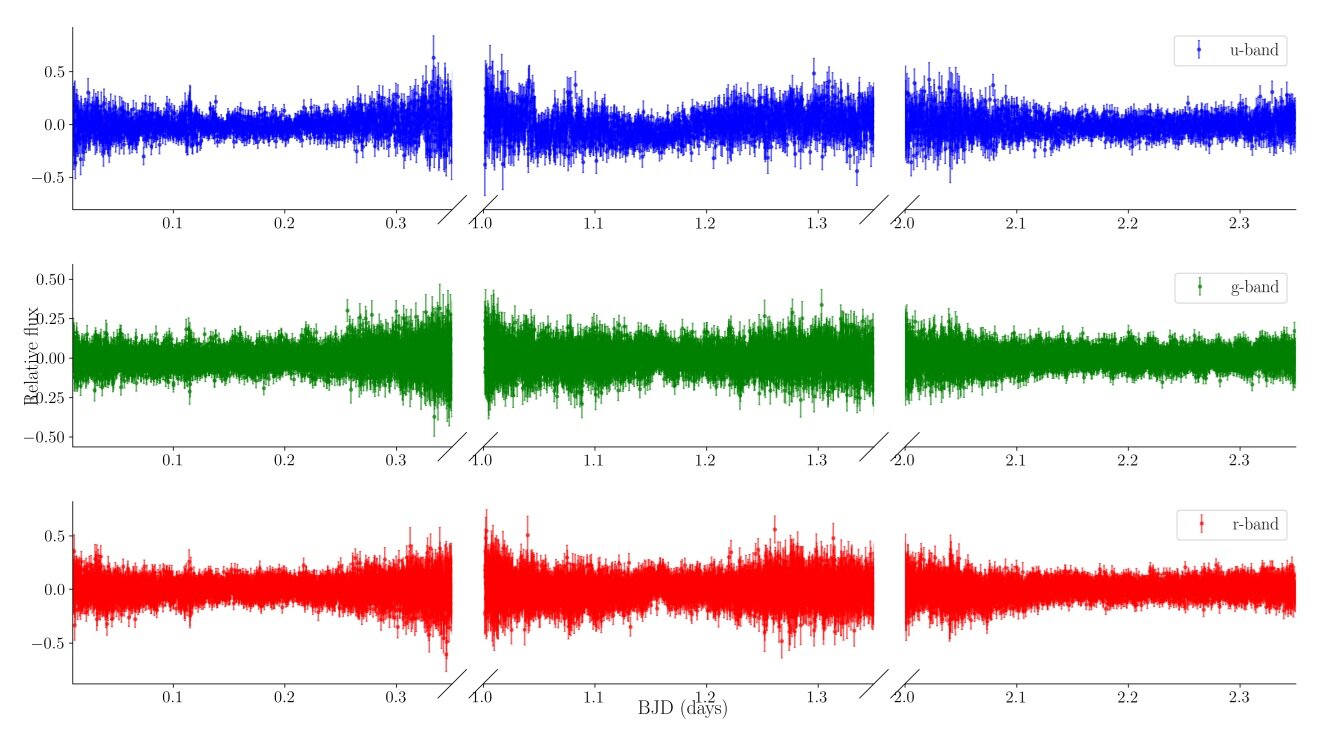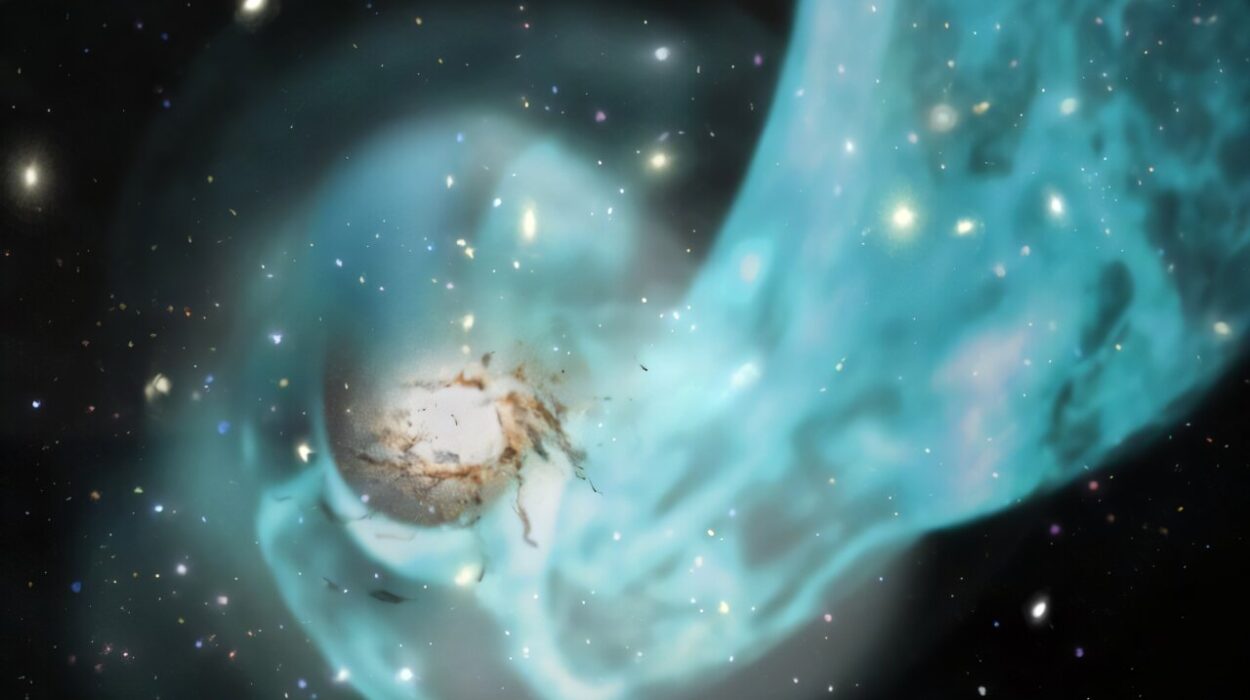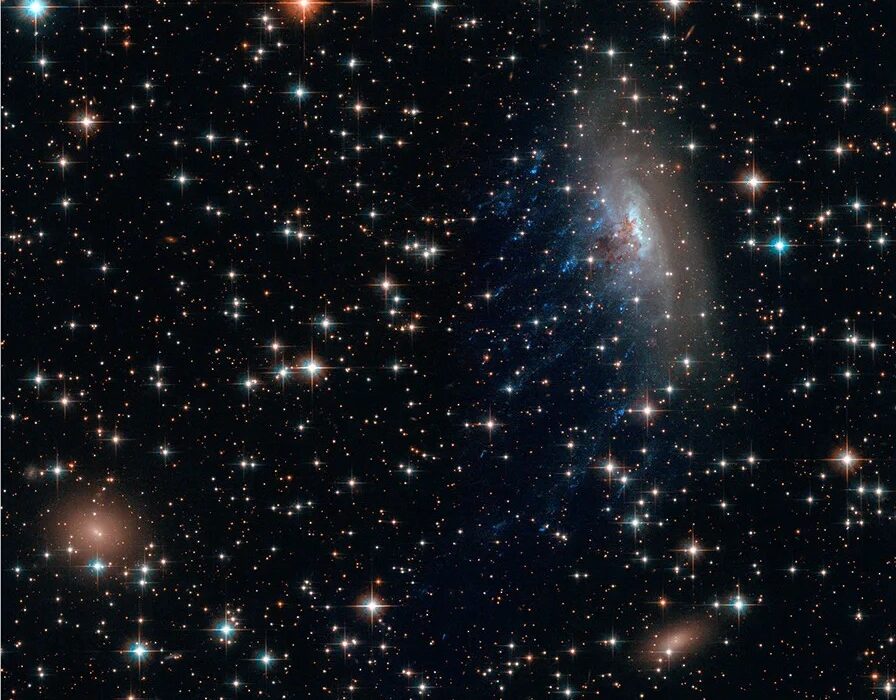It is hard to imagine the ghost of a star. And yet, floating 326 light years away from Earth is one such celestial ghost, known to astronomers as WD J004917.14–252556.81—or simply WD J0049−2525. This stellar remnant, forged in the violent aftermath of a dying sun-like star, is no ordinary white dwarf. With a staggering mass of 1.29 times that of our Sun, it holds the title of the most massive pulsating white dwarf ever detected. And now, thanks to time-series photometry captured from three different telescopes, scientists are listening—literally—to its slow, rhythmic heartbeat.
In a study published on May 22, 2025, on the arXiv preprint server, an international team of astronomers led by Özcan Çalışkan from Istanbul University has peeled back the layers of this dense object using the science of asteroseismology—the stellar equivalent of seismic studies on Earth. Their analysis has revealed an orchestra of 13 previously undetected pulsation modes, offering a rare and intimate look at the inner workings of this ultra-massive, slowly cooling star.
What Is a White Dwarf, and Why Does It Pulsate?
To understand the significance of WD J0049−2525, we first need to understand what a white dwarf is. Most stars, including our Sun, end their lives not with a bang but with a slow, quiet fade. After billions of years of nuclear fusion—hydrogen turning into helium, and helium into carbon and oxygen—their cores run out of fuel. What remains is the core itself: small, dense, and extremely hot. This remnant, no longer undergoing fusion, is called a white dwarf.
White dwarfs are incredibly compact. A typical white dwarf crams about the mass of the Sun into a sphere the size of Earth. That density is so extreme that electrons are squeezed into a quantum mechanical state known as degenerate matter, where normal atomic rules break down. The gravity at their surfaces is hundreds of thousands of times that of Earth’s.
Among white dwarfs, a subset known as ZZ Ceti stars, or DAVs, have atmospheres dominated by hydrogen and exhibit rhythmic pulsations. These pulsations are not sound waves, but non-radial gravity-mode oscillations. Think of them as slow ripples inside the star’s internal fluid, caused by temperature and density gradients as it cools.
The timing and pattern of these pulsations can be measured with extraordinary precision. And with them, astronomers can peer beneath the surface—much as geologists study the interior of Earth through earthquakes. That’s what makes asteroseismology such a powerful tool. In the case of WD J0049−2525, those pulsations are now telling us something remarkable about the ultimate fate of massive stars.
An Ultra-Massive ZZ Ceti Star with a Crystallized Core
WD J0049−2525 sits near the upper mass limit of white dwarfs—just shy of the Chandrasekhar limit, the theoretical maximum mass (~1.4 solar masses) before a white dwarf collapses into a neutron star. The fact that it remains stable suggests something fascinating is happening deep inside it.
One of the most extraordinary revelations of the new study is that more than 99% of the star’s core has already crystallized.
Yes, crystallized.
As white dwarfs cool over billions of years, their interiors can undergo a phase transition, similar to water freezing into ice. But instead of water molecules, the white dwarf’s heart is made of carbon and oxygen atoms. And in the extreme pressure of a white dwarf’s interior, these atoms arrange themselves into a solid, crystalline lattice—a star with a diamond-like core the size of the Moon. WD J0049−2525 is among the most advanced examples of this cosmic metamorphosis yet studied.
Listening to the Star: How Pulsations Reveal Inner Secrets
To probe the interior of WD J0049−2525, Çalışkan and his team gathered time-series photometric data using three observatories: the New Technology Telescope (NTT) in Chile, the Apache Point Observatory (APO) in New Mexico, and Gemini South, also located in Chile. By monitoring the star’s brightness fluctuations over time, they could isolate frequencies of pulsation—akin to detecting different notes in a song.
Previously, only two pulsation modes had been definitively observed in WD J0049−2525. But this new campaign changed the game entirely. The team identified 13 distinct and statistically significant pulsation frequencies, ranging from 3,868 microhertz (µHz)—a period of about 258 seconds—to 5,861 µHz (170 seconds). Several of these frequencies had high signal-to-noise ratios, confirming their authenticity and making them excellent candidates for deeper modeling.
This expanded frequency set is critical. Each mode penetrates a different depth inside the white dwarf, and together they form a kind of acoustic CAT scan of the star’s internal structure. These modes are sensitive to the thickness of the hydrogen layer, the temperature gradient, and the extent of the solid crystalline core. Matching the observed frequencies to theoretical models allows astronomers to reverse-engineer the star’s composition and thermal profile with incredible precision.
Rotation and Time: How Fast Does a Dying Star Spin?
One of the key puzzles in white dwarf astrophysics is their rotation rate. Stars like the Sun rotate every 25 days or so. As a star collapses into a much smaller white dwarf, it’s expected to spin faster, much like a figure skater pulling in her arms. But white dwarfs don’t always obey that intuition.
In the case of WD J0049−2525, the team detected two frequency splittings—subtle differences in closely spaced pulsation modes that can arise from stellar rotation. These splittings suggest a rotation period of either 0.3 days (7.2 hours) or 0.67 days (16 hours). Both are consistent with expectations for such a massive object but are still subject to future refinement.
Understanding a white dwarf’s rotation is not just an exercise in measurement—it’s a probe into its evolutionary history. Fast rotation could suggest a history of binary mergers or angular momentum conservation from a more massive progenitor. Slow rotation, on the other hand, might indicate strong magnetic braking or complex internal angular momentum transport mechanisms. In either case, it offers clues about how stars live and die.
Cosmic Consistency: Mass, Distance, and Modeling
Based on the asteroseismic analysis, WD J0049−2525’s mass is estimated to be 1.29 solar masses, reinforcing its status as an ultra-massive white dwarf. The estimated distance based on asteroseismic modeling falls between 304 and 320 light years, a range that closely matches parallax-based estimates from Gaia data.
This agreement is more than a tidy confirmation; it validates the theoretical models used in asteroseismology, confirming that the frequencies and amplitudes detected align with a realistic internal structure. It’s a testament to how well we now understand the physics of degenerate matter and thermal evolution inside white dwarfs.
Why WD J0049−2525 Matters
The discovery and analysis of pulsation modes in WD J0049−2525 opens new doors in both astrophysics and fundamental physics. For one, it provides a laboratory for extreme matter—densities and pressures that cannot be reproduced on Earth, even in our most powerful particle accelerators. The star’s crystalline core offers a real-world manifestation of quantum phase transitions, relevant to materials science and solid-state physics.
Moreover, white dwarfs like WD J0049−2525 are key actors in broader cosmic narratives. Ultra-massive WDs are candidates for Type Ia supernova progenitors, especially if they accrete additional mass or merge with a companion. These supernovae serve as cosmic yardsticks, used to measure the expansion rate of the universe and detect dark energy. So understanding how such stars behave—how they pulse, how they spin, how they cool—is crucial to understanding the cosmos at large.
Finally, these stars offer a kind of cosmic archaeology. Their slow cooling acts like a stellar clock, and the crystallization process adds a thermal delay, allowing scientists to estimate the ages of stellar populations in the galaxy. In this sense, WD J0049−2525 is not just a dying star—it’s a time capsule, whispering secrets about the Milky Way’s distant past.
Looking Ahead: More Data, Deeper Mysteries
Despite the stunning results of this study, many questions remain. The team led by Çalışkan stresses the need for higher-precision, longer-duration observations, ideally from space-based telescopes like TESS (Transiting Exoplanet Survey Satellite) or the future PLATO mission. These could detect even subtler pulsation modes, better constrain the rotation period, and potentially reveal signs of planetary debris or magnetic fields.
Moreover, each new ultra-massive ZZ Ceti star discovered serves as a new test case. Do they all crystallize this completely? Do they all rotate within the same narrow range? Or is WD J0049−2525 a cosmic outlier—a unique jewel in the sky?
In either case, this dying star still has much to teach us. Its flickering light, measured in microhertz and seconds, is a message from the deep, dense future of stellar evolution. And thanks to the scientists who listened carefully, we are now one step closer to decoding that message.
Reference: O. Caliskan et al, Asteroseismology of WD J004917.14-252556.81, the Most Massive Pulsating White Dwarf, arXiv (2025). DOI: 10.48550/arxiv.2505.17177






